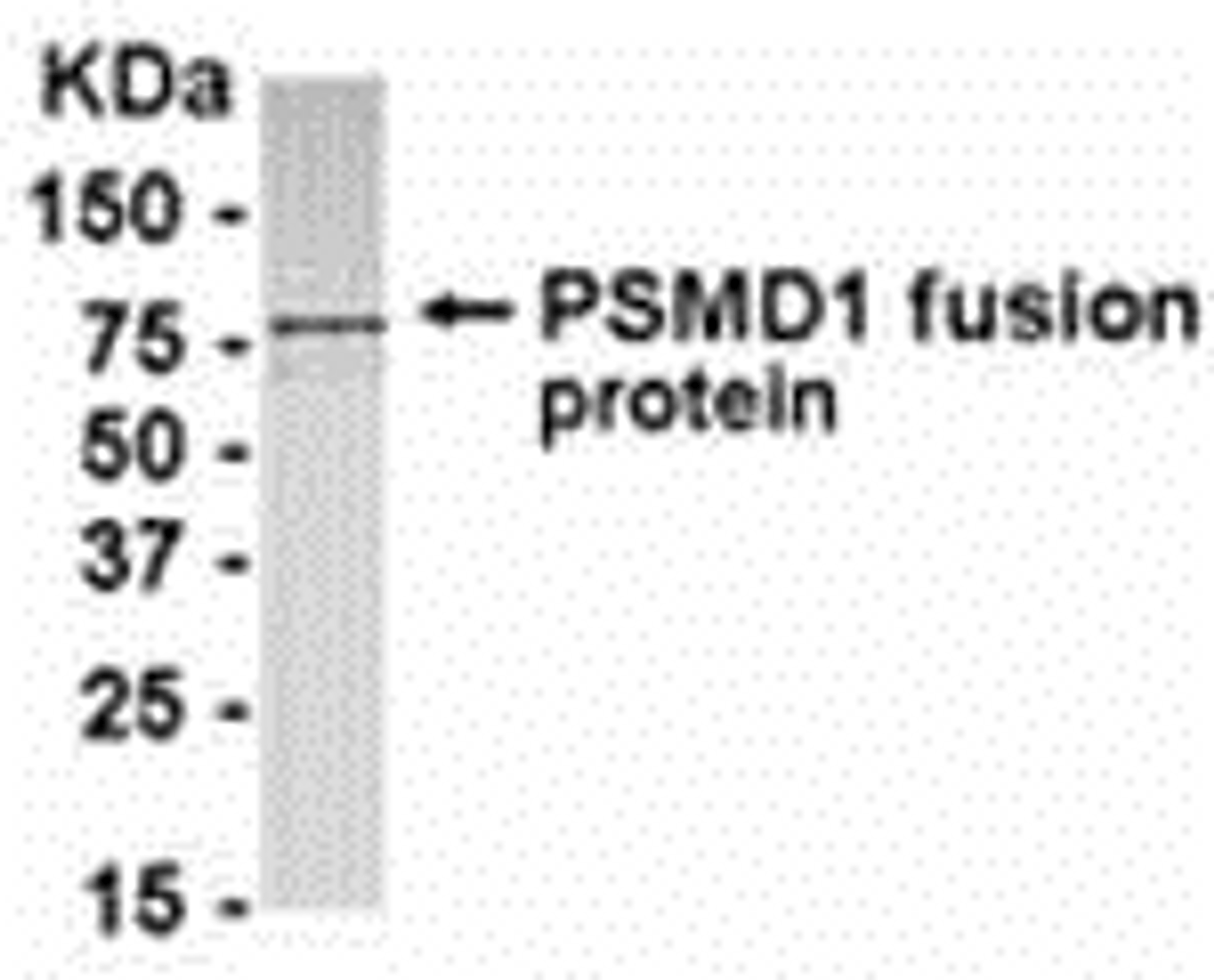Product Description
PSMD1 Antibody | XW-8127 | ProSci
Host: Chicken
Reactivity: Human, Dog, Rat, Bovine, Chicken
Homology: N/A
Immunogen: 21-270
Research Area: Other
Tested Application: WB
Application: 26S proteasome non-ATPase regulatory subunit 1 antibody can be used for the detection of 26S proteasome non-ATPase regulatory subunit 1 by Western Blot.
Specificiy: N/A
Positive Control 1: N/A
Positive Control 2: N/A
Positive Control 3: N/A
Positive Control 4: N/A
Positive Control 5: N/A
Positive Control 6: N/A
Molecular Weight: 105.8 kDa (calculated)
Validation: N/A
Isoform: N/A
Purification: Immunoaffinity Purified
Clonality: Polyclonal
Clone: N/A
Isotype: N/A
Conjugate: Unconjugated
Physical State: Liquid
Buffer: Phosphate-Buffered Saline. No preservatives added.
Concentration: 1 mg/mL
Storage Condition: PSMD1 antibody can be stored at 4˚C for short term (weeks) . Long term storage should be at -20˚C. As with all antibodies care should be taken to avoid repeated freeze thaw cycles. Antibodies should not be exposed to prolonged high temperatures.
Alternate Name: 26S proteasome non-ATPase regulatory subunit 1, 26S proteasome regulatory subunit RPN2, S1, P112, Rpn2, 26S proteasome nonATPase regulatory subunit 1, 26S proteasome regulatory subunit S1, 26S proteasome subunit p112
User Note: Optimal dilutions for each application to be determined by the researcher.
BACKGROUND: FUNCTION: Acts as a regulatory subunit of the 26 proteasome which is involved in the ATP-dependent degradation of ubiquitinated proteins.
SIMILARITY: Contains 10 PC repeats.
SUMMARY: The 26S proteasome is a multicatalytic proteinase complex with a highly ordered structure composed of 2 complexes, a 20S core and a 19S regulator. The 20S core is composed of 4 rings of 28 non-identical subunits; 2 rings are composed of 7 α subunits and 2 rings are composed of 7 beta subunits. The 19S regulator is composed of a base, which contains 6 ATPase subunits and 2 non-ATPase subunits, and a lid, which contains up to 10 non-ATPase subunits. Proteasomes are distributed throughout eukaryotic cells at a high concentration and cleave peptides in an ATP/ubiquitin-dependent process in a non-lysosomal pathway. An essential function of a modified proteasome, the immunoproteasome, is the processing of class I MHC peptides. This protein is the largest non-ATPase subunit of the 19S regulator lid, which is responsible for substrate recognition and binding.
 Euro
Euro
 USD
USD
 British Pound
British Pound
 NULL
NULL










